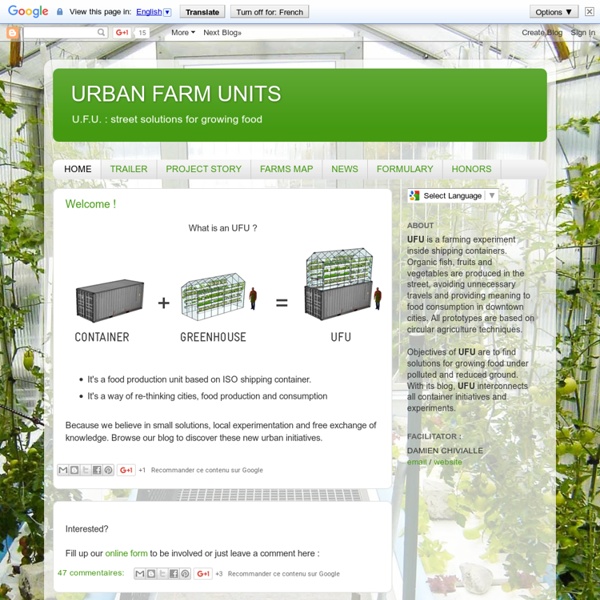re:farm the city
I will share here a low cost solution for the recycling of organic waste, appropriate for apartments and urban housing that do not have a piece of land or an outdoor area. This construction is inspired by the Cadico earthworms nice project. The photos are from the composter I made here at home : ) It’s called a Vermi composter because we use worms in the process, uhuuuuu big thanks to the worms, they deserve! To make this kind of composter, it is important to use stackable supports to separate the different stages of composting. In this case, I used 3 buckets of margarine 15L reused. You can ask for them for free at local businesses such as coffee shops, bakeries, juice houses, etc..
2011 Bio Divercity: A sustainable city for the green world of tomorrow
2011 Bio Divercity: A sustainable city for the green world of tomorrow Cities built without planning often resemble chaos while those that are meticulously planned look artificial. There is a need for the city to be a model of harmonious co-existence of natural and man-made elements.
5 Green building designs for the future of farming
When crammed for space, grow skywards! This seems to be the motto in all sectors from housing to travel. So when somebody speaks of vertical farming, they are definitely not joking.
Compost Your Used Coffee Grounds to Kickstart Your Own DIY Fertilizer
Before you throw out your next batch of used coffee grounds, consider composting them. As food weblog Serious Eats points out, composting used coffee grounds is a great way to start cheap, low-mainetenance DIY fertilizer. Used coffee grounds are rich in nitrogen, one of the main ingredients necessary for both a good fertilizer and a properly balanced compost pile: When paired with "browns" like leaves, twigs, even coffee filters, coffee is the perfect catalyst for healthy decomposition, which can speed up the composting process and give you better fertilizer faster. Worms love the stuff: They'll munch your day-old coffee happily, turning it into black gold by digesting it and producing nutrient-rich castings.
Vincent Callebaut Architecte DRAGONFLY
The world of fast-food and frozen food is over! The urban keen interest of the beginning of our Century turns toward the garden flat bringing back the countryside in our overcrowded cities fighting from now on for a community urban agriculture able to contribute to the durability of the city and to rethink the food production. On the roofs, terraces, balconies, in the hollow of the non-built public spaces, in the interior yards and the suspended greenhouses, the eco-warrior aspires to escape from its competitive and consumeristic universe imposed by the laws of the market. He desires to cultivate its immediate landscape so as to better take root in the ground by creating his own ecologic and alimentary biodiversity.
The Taiwan Tower is a Sustainable Twin Syscraper for the 21st Century
The Taiwan Tower is a proposal by Vienna-based architect Steven Ma in Collaboration with San Liu, Xinyu Wan, and Emre Icdem. This highly innovative project consists of a set of super slim twin towers that reach a height of 350 meters where an observatory and sky-park is located. The plinth of the towers is formed by an intricate set of museums that will exhibit Taiwan’s past, present, and future.
Eco-Pods Produce Bio-Fuel Energy
We have seen the financial outcome of the Real Estate crash in 2008. What sometimes we overlook are the urban voids left by unfinished buildings. That is the case of the Filene’s development in downtown Boston which construction was halted in November 2008. Höweler + Yoon Architecture and Squared Design Lab think this as an opportunity to explore new ways of producing architecture. They have designed a prefabricated ‘Eco-Pod’ that proposes to stimulate the economy and the ecology of downtown Boston.
Reinterpreting Green Space in West London
This post is also available in: Chinese (Traditional) ‘A product of the creative encounter between the man-made and the natural, between order and disorder, the garden can offer productive metaphors for the interactions between human life and time, care, thought or space.’ The fate of the city garden has been featured on This Big City in the past. With pressure on urban space increasing as populations grow and building becomes more intensive, will gardens be a less common sight in future cities? Those interested in this subject (who happen to be in London this weekend) might enjoy the Serpentine Gallery’s Garden Marathon.


